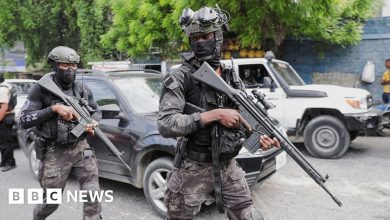PNG landslide: More than 2,000 killed, government says

MELBOURNE, Australia (AP) — A Papua New Guinea government official told the United Nations that more than 2,000 people were believed to have been buried alive as of Friday. landslide and officially requested international assistance.
The government figure is roughly triple the UN estimate of 670 people killed by the landslide in the mountainous interior of this South Pacific island nation. The remains of only five people were found Monday, local authorities reported. It was not immediately clear why the tally of six announced Sunday had been revised downward.
In a letter seen by The Associated Press to the United Nations resident coordinator dated Sunday, the acting director of the country’s National Disaster Center, Luseta Laso Mana, said the landslide “buried more than 2,000 living people” and caused “major destruction” in Yambali. village in Enga province.
Estimates of the number of victims have varied widely since the disaster, and it was not immediately clear how authorities arrived at the number of people affected.
The International Organization for Migration, which works closely with the government and plays a leading role in the international response, has not changed its estimated death toll of 670, published on Sunday, pending further evidence .
“We are not in a position to dispute what the government is suggesting, but we are not in a position to comment on it,” said Serhan Aktoprak, head of the UN migrant agency’s mission in Papua New -Guinea.
“As time passes in such a massive undertaking, the numbers will remain fluid,” Aktoprak added.
The death toll of 670 was based on calculations by Yambali village and Enga province officials that more than 150 houses had been buried by the landslide. The previous estimate was 60 homes.
The Office of the Prime Minister of Papua New Guinea James Marape did not respond Monday to a request for an explanation based on the government estimate of 2,000 people. Marape promised to release information on the extent of the destruction and loss of life as soon as it becomes available.
It is difficult to determine the scale of the disaster due to difficult conditions on the ground, including the remoteness of the village, lack of telecommunications and tribal wars throughout the province that require relief and international assistance. convoys require military escorts.
At least 26 tribal warriors and mercenaries were killed in a battle between two warring tribes in Enga in February, as well as an unconfirmed number of bystanders.
The lack of reliable census data from the national government also adds to the difficulty of determining the potential death toll.
The government estimates Papua New Guinea’s population at around 10 million, although a UN study, based on data including satellite photographs of rooftops, estimates that by 2022 it could reach 17 million . No accurate census has been held in the country for decades.
The landslide also buried a 200-meter (650-foot) stretch of the province’s main highway under debris 6 to 8 meters (20 to 26 feet) deep, creating a major obstacle for rescuers.
Mana said the landslide would have a major economic impact on the entire country.
An excavator donated by a local builder on Sunday became the first piece of heavy earth-moving equipment brought in to help villagers who were digging with shovels and farm tools to find the bodies. Working around constantly moving debris is dangerous.
“The situation remains unstable” due to the changing terrain, “representing ongoing danger to both rescue teams and survivors,” Mana wrote to the United Nations.
Mana and Papua New Guinea Defense Minister Billy Joseph flew on Sunday aboard an Australian military helicopter from the capital Port Moresby to Yambali, 600 kilometers (370 miles) to the northwest, to get a direct idea of what is needed.
Mana’s office posted a photo of him in Yambali handing a local official a check for 500,000 kina ($130,000) to buy emergency supplies for 4,000 displaced survivors.
The purpose of the visit was to decide whether the Papua New Guinea government should formally request more international support.
Earth-moving equipment used by the Papua New Guinean army was being transported to the disaster site, 400 kilometers (250 miles) from the east coast town of Lae.
Traumatized villagers are divided over whether heavy machinery should be allowed to dig up and potentially further damage the bodies of their buried loved ones, officials said.
___
Associated Press journalist Adam Schreck in Bangkok contributed to this report.
News Source : apnews.com
Gn world



